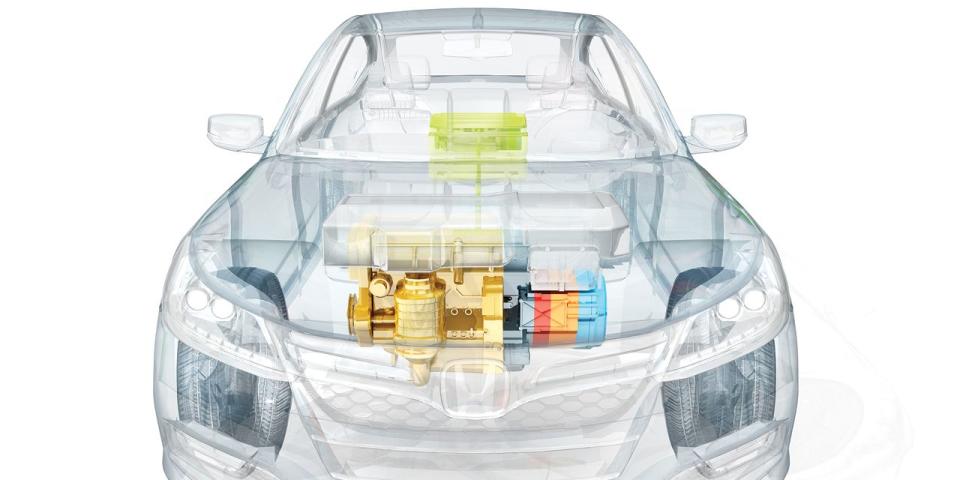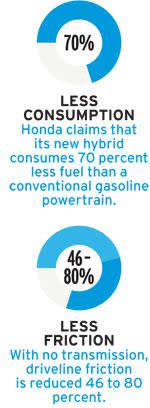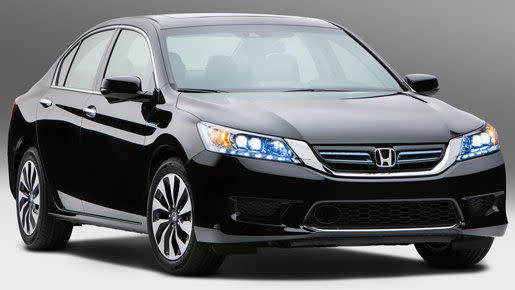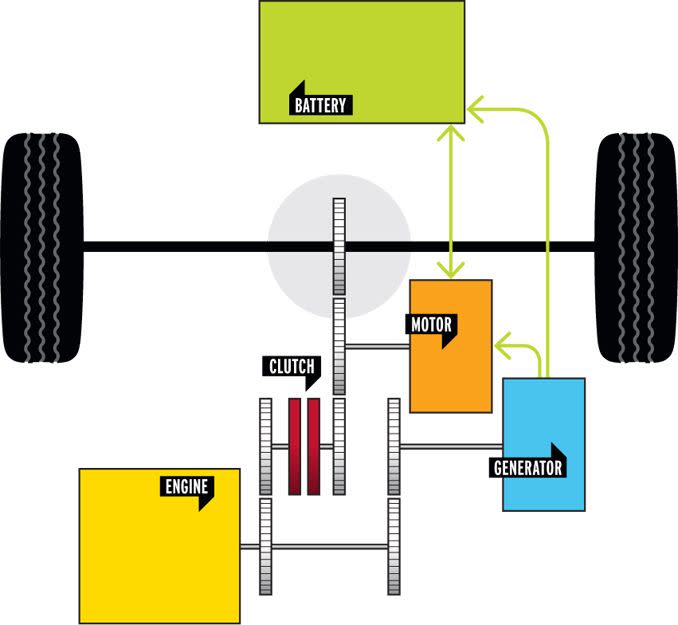Explaining the Honda Accord's Shrewdly Designed New Hybrid System

From the October 2013 Issue of Car and Driver
Inventing elegant solutions to complex problems is a Honda specialty. When the first hybrids arrived in the U.S., Honda beat Toyota to the market, barely, by simply installing a pancake AC motor ahead of the engine’s flywheel. That design, called Integrated Motor Assist, was compact and efficient but didn’t offer pure-electric drive until 2006. Now that hybrids are evolving into plug-in hybrids, Honda has created a new, two-motor powertrain layout that’s also nothing like the intricate CVT-based drive system found in the original Prius and many subsequent hybrids.

What’s clever about Honda’s latest innovation is that it has no transmission. At least, none in the conventional sense. There are four gearsets between the electric and combustion power sources and the front wheels, but all drive ratios are fixed. The compound powertrain provides three standard propulsion modes—electric-only, gasoline-only, and blended gas and electric—without shifting gears or varying a planetary ratio.

The 166-hp AC drive motor revs to 12,584 rpm. Full torque, an energetic 226 pound-feet, is available from zero to 4000 rpm, providing the Accord with light feet in traffic. The motor’s efficiency is diminished at highway speeds, but it still provides some of the propulsion torque up to the Accord’s governed 114-mph top speed. During deceleration and braking, this electric machine acts as a generator to replenish the 6.7-kWh lithium-ion battery pack.
The secondary AC machine is smaller and serves mainly as a generator, providing the drive motor with electric current to augment or replace juice from the battery during cruising. On cue, this machine starts the engine so it can supply the required torque, but it never drives the wheels.
The 141-hp four-cylinder engine was engineered just for this application with several special features. As in most hybrids, it uses an Atkinson cycle (late-closing intake valves) that sacrifices some low-rpm torque to gain mid-range efficiency. A two-mode variable intake-valve-timing and -lift system provides extra power for acceleration and maximum efficiency during cruising. Recycling cooled exhaust gas (EGR) also reduces consumption, and the brake booster, air conditioner, and cabin heater are all electrically powered. Above 43 mph, the secondary motor spins the engine up to speed, and a clutch connects it to the drive wheels. The engine and motor collaborate beyond that speed. A control computer adjusts engine load so it stays in its most efficient operating zone, but once the clutch is engaged, engine rpm is proportional to car speed.
Shiftlessness

Not counting the late Fisker Karma, the Honda Accord is the only hybrid without a transmission. Eliminating gearchanges improves efficiency.
This hybrid system’s main benefit is improved efficiency. Honda claims its direct-driver has 46 to 80 percent less friction than a conventional automatic, depending on the drive mode. Ironically, the one plug-in hybrid that beats it in EPA mileage tests is the smaller and significantly lighter Toyota Prius, rated at 50 combined mpg versus the Accord’s 46 mpg. Unlike the Prius family, though, there’s no rubber-band effect during acceleration with the engine droning at high rpm and road speed gradually catching up.
The only notable lapse in Honda’s creativity is the name bestowed on this drivetrain: Two-motor Sport Hybrid Intelligent Multi Mode Drive/Plug-in. Go figure.
You Might Also Like

 Yahoo Autos
Yahoo Autos 